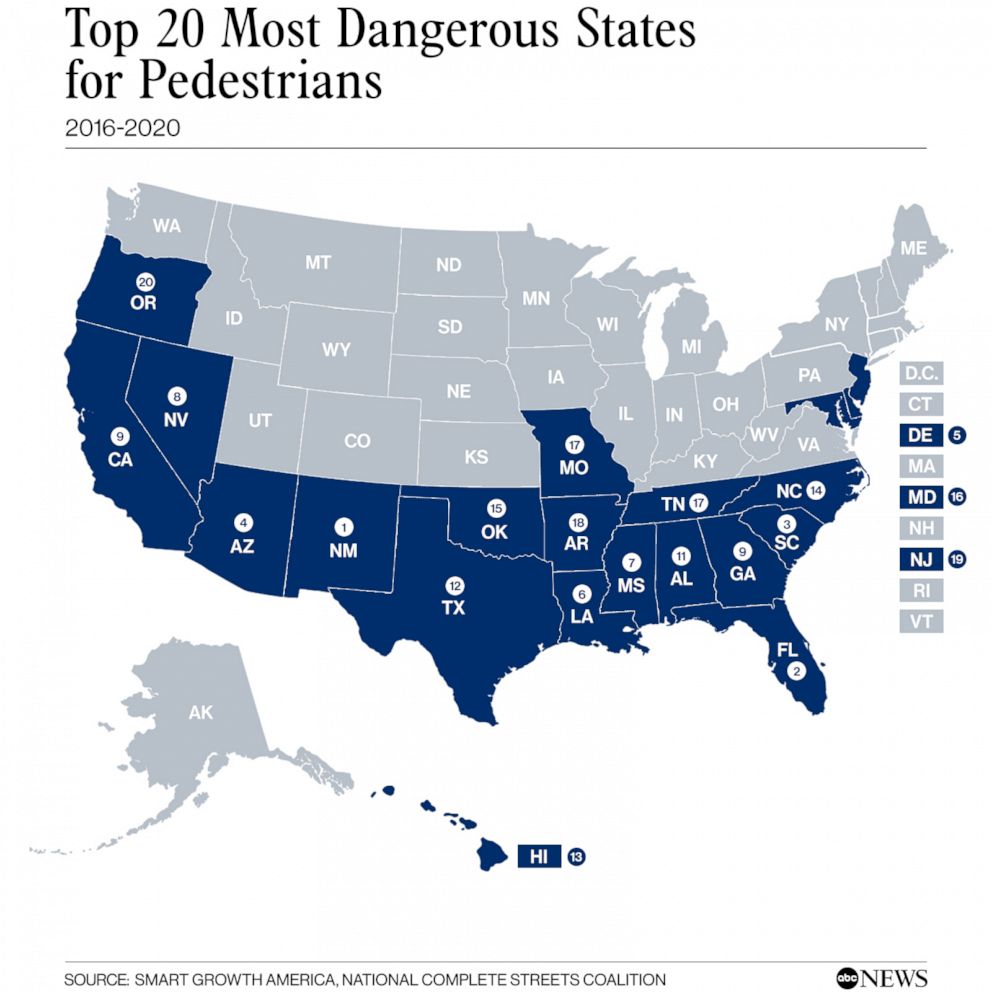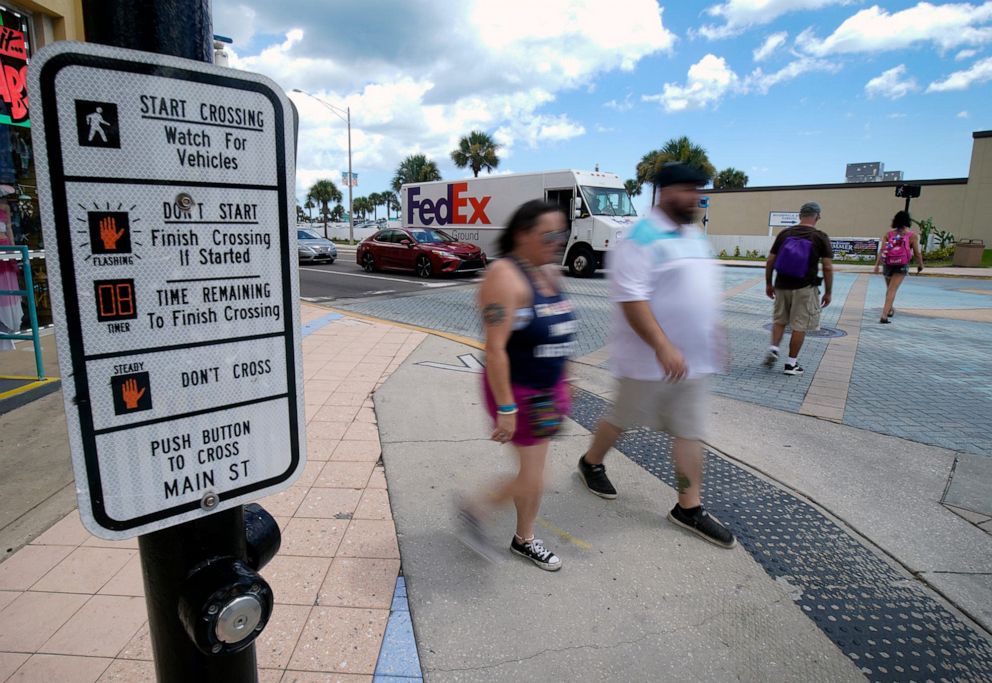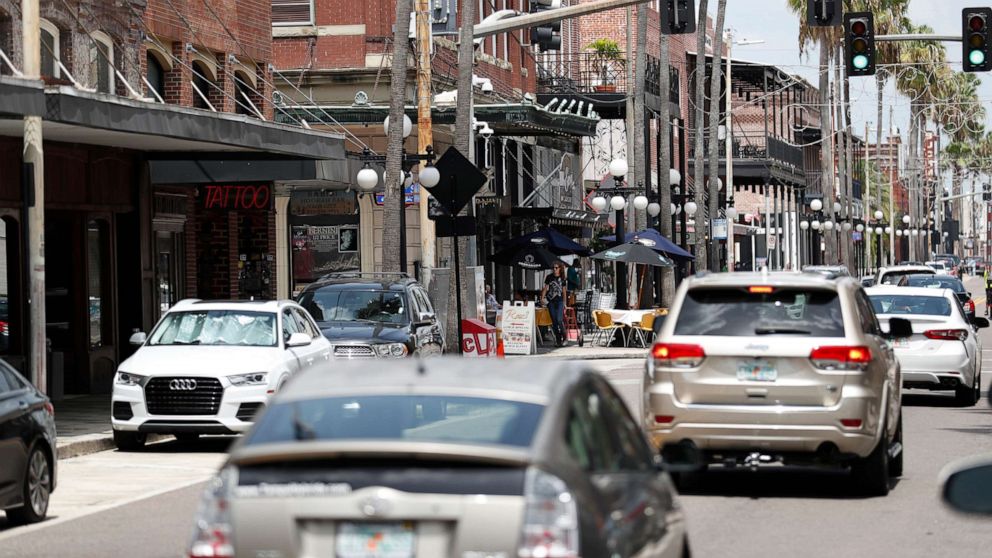The nation’s streets are becoming more deadly for pedestrians, according to a new report released today.
The report by Smart Growth America and the National Complete Streets Coalition found that in 2020, more than 6,500 people were struck and killed while walking. That averages out to 18 people a day – a 4.5% increase from 2019.
However, for Black, Native and low-income pedestrians, the risks of walking in the U.S. are high.
Black pedestrians are twice as likely to be struck and killed while walking than white pedestrians, while Native people are more than three times as likely to be fatally hit.
Low-income neighborhoods are also more likely to experience more pedestrian deaths, the research found.

Some of the deadliest regions for pedestrians in America have not improved in recent years — in fact, the report shows that they have gotten worse.
Smart Growth America, National Complete Streets Coalition
These neighborhoods may have the deadly combination of having fewer sidewalks and parks, as well as more arterial roads that lead to higher speeds and more traffic that leads to more pedestrian fatalities.
The Tampa-Clearwater metro area in Florida is one of the deadliest regions, according to the report.
Whit Blanton, the executive director of the Pinellas County-based land use and transportation planning agency Forward Pinellas, says the prioritization of cars as the main form of transportation has made some places unwalkable.

Two pedestrians cross State Road A1A while two others head across Main Street in Daytona Beach. The area sees a lot of tourists making their way around to see the sights, putting them in conflict with vehicles traveling through.
Nigel Cook/Daytona Beach News-Journal via USA Today Network, FILE
He told ABC News that many regions like Pinellas County were developed with the automobile as the focus, and though plenty of downtown areas are walkable … “the vast majority of people don’t live downtown.”
“You’re walking next to 45-50 mile an hour traffic that’s lined with commercial retail shops, a lot of driveways and parking out front,” Blanton said, listing the walkability issues plaguing regions across the country. “When you walk, you have to walk through a parking lot to get to the front door of whatever business or destination you have in mind. You have to cross some big wide roads and drivers are frequently allowed to turn right on red.”
Research from the report found that highways across the country were oftentimes built through or close to Black, brown, or low-income neighborhoods – making them harder to live in, destroying businesses, displacing residents and making them unfriendly to pedestrians.

In this June 26, 2020, file photo, cars are seen driving on 7th Avenue in the Ybor City neighborhood of Tampa, Fla.
Octavio Jones/Getty Images, FILE
The Governors Highway Safety Association (GHSA) estimates that the number of pedestrian deaths is only going to increase.
The agency estimates that 7,485 people were struck and killed while walking in 2021, which would be the highest number in 40 years.
However, not all regions are equal when it comes to walkability.
The top 10 deadliest states, starting with the deadliest, include: New Mexico, Florida, South Carolina, Arizona, Delaware, Louisiana, Mississippi, Nevada, as well as Georgia and California.
The top 10 deadliest metro areas for pedestrians, starting with the deadliest, include: Deltona-Daytona Beach-Ormond Beach, Florida; Albuquerque, New Mexico; Memphis, Tennessee; Tampa-Clearwater, Florida; Charleston-North Charleston, South Carolina; Jacksonville, Florida; Bakersfield, California; Orlando-Kissimmee-Sanford, Florida; Stockton, California; and Fresno, California.

